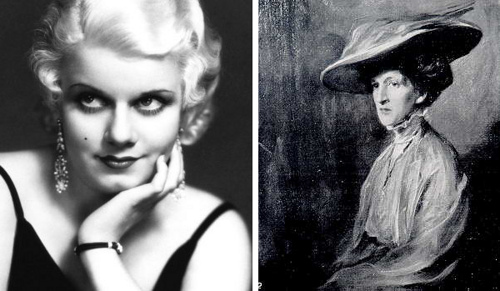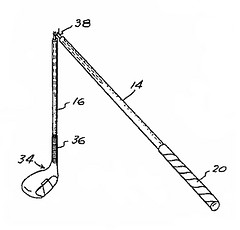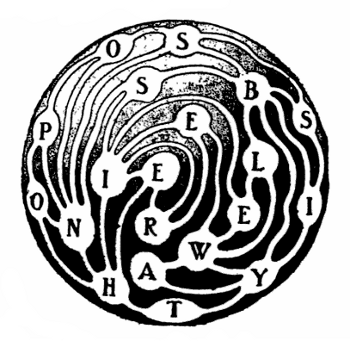
Can God cease to be omnipotent?
Can God make himself simultaneously omnipotent and not omnipotent?
Can God make another omnipotent being?

Can God cease to be omnipotent?
Can God make himself simultaneously omnipotent and not omnipotent?
Can God make another omnipotent being?
A curious phenomenon occurred at the farm of Balvullich, on the estate of Ord, occupied by Mr Moffat, on the evening of Monday last. Immediately after one of the loudest peals of thunder heard there, a large and irregular-shaped mass of ice, reckoned to be nearly 20 feet in circumference, and of a proportionate thickness, fell near the farm-house. It had a beautiful crystalline appearance, being nearly all quite transparent, if we except a small portion of it which consisted of hailstones of uncommon size, fixed together. It was principally composed of small squares, diamond-shaped, of from 1 to 3 inches in size, all firmly congealed together. The weight of this large piece of ice could not be ascertained; but it is a most fortunate circumstance, that it did not fall on Mr Moffat’s house, or it would have crushed it, and undoubtedly have caused the death of some of the inmates. No appearance whatever of either hail or snow was discernible in the surrounding district.
– Scotsman, Aug. 11, 1849, quoted in The Edinburgh New Philosophical Journal, October 1849
Census Taker: How old are your three daughters?
Mrs. Smith: The product of their ages is 36, and the sum of their ages is the address on our door here.
Census Taker: (after some figuring) I’m afraid I can’t determine their ages from that …
Mrs. Smith: My eldest daughter has red hair.
Census Taker: Oh, thanks, now I know.
How old are the three girls?

On being introduced to Margot Asquith, Jean Harlow mispronounced her name Margut.
“My dear, the T is silent,” said Asquith, “as in Harlow.”

A breakable club for temperamental golfers, patented in 1963 by Ashley Pond III.
“[T]he shaft of the club is deliberately constructed to break when struck against the ground, a tree, or other inanimate elements when the anger of the golfer reaches a mercurial height.”
Here’s another solution.
Unusual movie titles listed by Patrick Robertson in Film Facts (2001):
For “most preposterous movie title ever conceived,” David McGillivray in Films and Filming nominates Betta, Betta in the Wall, Who’s the Fattest Fish of All (U.S., 1969) and She Ee Clit Soak (U.S., 1971).
See Light Reading.

It has been discovered that on the extreme left of the façade front of the new [Boston] Public Library building are chiseled in tablets the following names: Moses, Cicero, Kalidasa, Isocrates, Milton, Mozart, Euclid, Æschylus, Dante, Wren, Herrick, Irving, Titian, Erasmus. These names form an acrostic, the first letters spelling the names of the firm of architects which has furnished the plan for the building. A representative of the architects [McKim, Mead and White] says he can assign no reason for it except that it was ‘a prank of some of the boys in the office.’ Three of these names, Dante, Milton and Titian, appear on the other tablets and in their proper places. This duplication is another proof that the acrostic was intentional.
– The Critic, June 4, 1892
(After a public outcry, the inscription was removed.)
Write down any natural number, reverse its digits to form a new number, and add the two:

In most cases, repeating this procedure eventually yields a palindrome:


With 196, perversely, it does not — or, at least, it hasn’t in computer trials, which have repeated the process until it produced numbers 300 million digits long.
Is 196 somehow immune to producing palindromes? No one’s yet offered a conclusive proof — so we don’t know.

From Sam Loyd:
Here is a map of the newly discovered cities and waterways on our nearest neighbor planet, Mars. Start at the city marked T, at the south pole, and see if you can spell a complete English sentence by making a tour of all the cities, visiting each city only once, and returning to the starting point.
When this puzzle originally appeared in a magazine, more than fifty thousand readers reported, ‘There is no possible way.’ Yet it is a very simple puzzle.
I’ll withhold the answer.

Passing south of the Canary Islands on Dec. 4, 1893, the S.S. Umfuli passed “a monster fish of the serpentine shape, about 80 feet long, with shining skin, and short fins, about 20 feet apart, on the back; in circumference, about the dimensions of a full-sized whale.”
Neither captain R.J. Cringle nor his crew had ever seen anything like it, but they were certain of what they saw. The sea was like a mirror, “and this thing, whatever it was, was in sight for over half an hour.”
Cringle said it was rushing through the water at great speed, throwing water from its breast, and he saw fully 15 feet of its head and neck on three separate occasions. The body, which was not scaly, showed three distinct humps and was much thicker than the neck: “I should not, therefore, call it a serpent.” The Umfuli’s log shows that the chief officer observed the creature through his glass and saw an enormous mouth with great rows of teeth.
“I have been so ridiculed about the thing that I have many times wished that anybody else had seen that sea-monster rather than me,” Cringle said. “I have been told that it was a string of porpoises, that it was an island of seaweed, and I do not know what besides. But if an island of seaweed can travel at the rate of fourteen knots an hour, or if a string of porpoises can stand 15 feet out of the water, then I give in, and confess myself deceived. Such, however, could not be.”